
views
Preparing to Sterilize the Needle

Wear gloves. Before you handle any needles, you need to wear gloves. If you don't have gloves, make sure you wash your hands (and wrists) thoroughly.
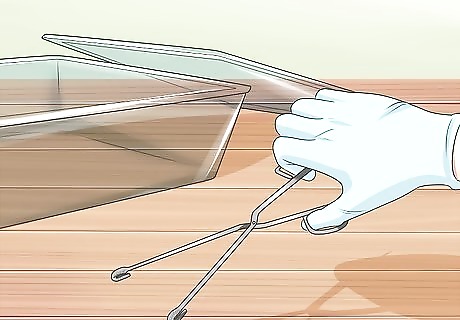
Gather sterilized equipment. When you are sterilizing needles, you need to make sure that you don't contaminate the needle after you sterilize it. Use sterilized tongs or spoons to pick the needle out of whatever device you place it in. Don't touch the newly sterilized needle with your hands or gloves. You could have contaminants on them. Place the needle in a sterilized container if you are storing it.
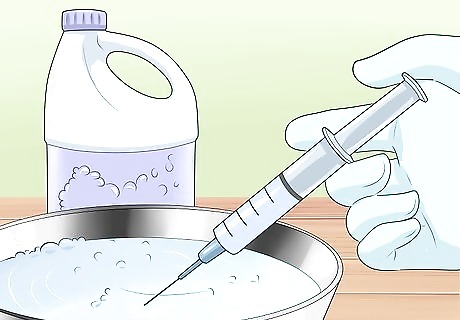
Wash the needle. Before you sterilize the needle, make sure to wash it. This removes any dirt, grime, or blood left on the needle. This is extremely important if you have used the needle before. Make sure to clean inside the needle if it is hollow. Use a clean or sterilized syringe to run water and soap through the inside.
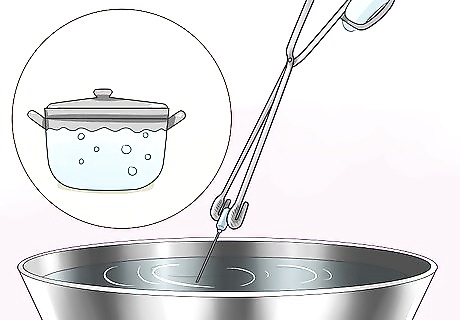
Rinse the needles. After washing the needles with soap or disinfectant, you need to rinse them with sterile water. Make sure to use sterile water instead of distilled water. Distilled water can still contain bacteria. You need to rinse the needles to make sure there are no deposits from the washing left behind.
Sterilizing the Needle
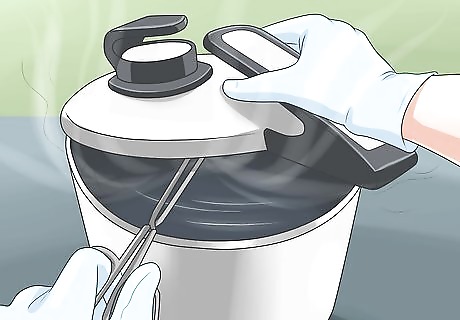
Use steam. Steam is one of the most widely used and effective methods for sterilizing needles. No living thing can survive direct exposure to saturated steam at 250 degrees Fahrenheit (120 degrees Celsius) for longer than 15 minutes. Use a steaming pot to do this. Put water in the bottom pot. When it starts to boil, place the needle in the pot with the holes over the boiling pot, then cover it with a lid. Let it steam for at least 20 minutes. An autoclave is a tool specifically made for sterilizing needles and other tools by steam. If you need to sterilize needles often and precisely, you may want to invest in one.
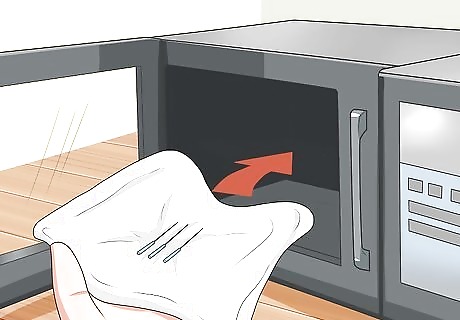
Bake the needle. Wrap the needle in multiple layers of clean cloth. Bake the needle for 1 hour at 340 degrees Fahrenheit. This is one way to completely sterilize the needle by killing all the microorganisms. Make sure you leave it in the oven long enough. This method can be used to sterilize needles used for acupuncture, medical use, and piercings and tattoos.#*Dry heat can cause the needle to become brittle.

Use fire. Use a gas-fueled fire because they leave less residue behind. Place the needle tip in the flame until it glows red. Sterilizing a needle in a flame is good for home use, but doesn't get completely sterile because the needle can pick up contaminants in the air after If there are any soot or carbon deposits on the needle, wipe it with a sterile gauze pad. This method is effective for removing a splinter, but is not the most sterile. Therefore, it is not recommended for piercing, tattooing, or medical uses.#Boil the needle in water. One way to sterilize a needle is to drop it in boiling water. After you wash and rinse your tools, cover them with water and boil them for 20 minutes. Start counting the 20 minutes after the water has reached a boil.Sterilize a Needle Step 8.jpg

Use chemicals. You can sterilize a needle by using chemicals. You can soak a needle in medical ethanol, bleach, 70% isopropyl alcohol, or 6% hydrogen peroxide. Make sure they stay submerged for at least 20 minutes before taking them out. If you use drinking alcohol, choose the strongest alcohol you can, such as gin, and allow it to soak for 1 day. Clean the needles thoroughly before sterilizing them since even the slightest contamination can prevent the chemicals from working. Do not use chemicals to sterilize needles that you’d use inside the womb.












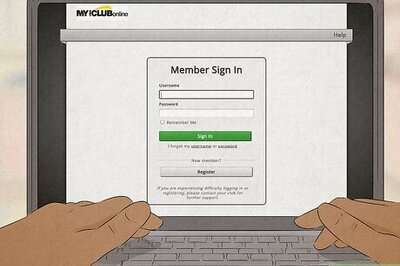


Comments
0 comment